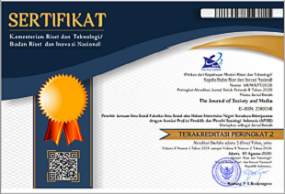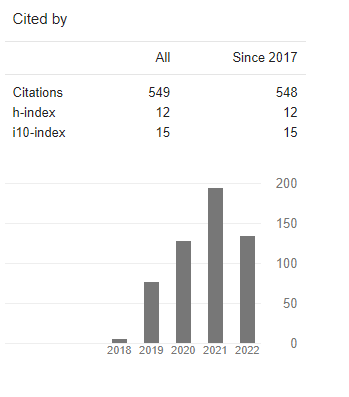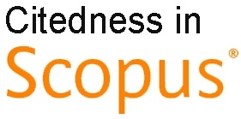The Relationship between Gratification of Internet Usage and Negative Behavior among Youth in Malaysia
DOI:
https://doi.org/10.26740/jsm.v6n2.p392-421Keywords:
drug usage, pornography, social isolation, online gambling, gratification of internet usageAbstract
Youth are significant consumers of internet technologies. Sometimes, adolescents are directly involved in problematic internet usage, such as online gambling and pornography. They are indirectly exposed to some negative behavior, such as alcohol usage, drug usage, internet addiction, and social isolation. This study aims to identify the relationship between six factors of negative behavior and gratification in using the internet among 440 Malaysian youth by collecting data via survey. The theory applied is the uses and gratification theory (U&G). The results revealed no meaningful relationship between the gratification of using the internet and pornography, online gambling, alcohol, and drug usage. However, there was a significant positive relationship between the gratification of internet use, social isolation, and internet addiction.
References
Association, A. P., & Association, A. P. (2013). Diagnostic and statistical manual of mental disorders: DSM-5. In: Washington, DC: American psychiatric association.
Block, J. J. (2008). Issues for DSM-V: Internet addiction. In: Am Psychiatric Assoc.
Choong, L. L., Loo, J. M., & Ng, W. S. (2014). The experience of recovering gamblers in Malaysia: A phenomenological study. Asian Journal of Gambling Issues and Public Health, 4(1), 1.
Department of Statistics Malaysia. (2010). Population distribution and basic demographic characteristic report. Retrieved from Kuala Lumpur, Malaysia: http://www.statistics.gov.my/portal/index.php?option=com_content&id=1215
Department of Statistics Malaysia. (2018). ICT use and access by individuals and households survey report, Malaysia, 2017. Retrieved from https://www.dosm.gov.my/v1/index.php?r=column/pdfPrev&id=bHBzbWxkWElxRDlmaU81Q3R2ckRkZz09
Enez Darcin, A., Kose, S., Noyan, C. O., Nurmedov, S., Y?lmaz, O., & Dilbaz, N. (2016). Smartphone addiction and its relationship with social anxiety and loneliness. Behaviour & Information Technology, 35(7), 520-525.
Gainsbury, S. M. (2015). Online gambling addiction: the relationship between Internet gambling and disordered gambling. Current Addiction Reports, 2(2), 185-193.
Griffiths, M. (1996). Behavioural addiction: an issue for everybody? Employee Councelling Today.
Haigh. (2015). Stop Phubbing. Retrieved from http://stopphubbing.com
Hald, G. M., & Mulya, T. W. (2013). Pornography consumption and non-marital sexual behaviour in a sample of young Indonesian university students. Culture, Health & Sexuality, 15(8), 981-996.
Humphreys, K., & Klaw, E. (2001). Can targeting nondependent problem drinkers and providing Internet-based services expand access to assistance for alcohol problems? A study of the moderation management self-help/mutual aid organization. Journal of Studies on Alcohol, 62(4), 528-532.
Johnston, L. D., O'malley, P. M., Bachman, J. G., & Schulenberg, J. E. (2010). Monitoring the Future: National Survey Results on Drug Use, 1975-2009. Volume I: Secondary School Students. NIH Publication No. 10-7584. National Institute on Drug Abuse (NIDA).
Kapahi, A., Ling, C. S., Ramadass, S., & Abdullah, N. (2013). Internet addiction in Malaysia causes and effects.
Klein, B., White, A., Kavanagh, D., Shandley, K., Kay-Lambkin, F., Proudfoot, J., . . . Young, R. (2010). Content and functionality of alcohol and other drug websites: Results of an online survey. Journal of medical Internet research, 12(5), e51.
Ling, C. K., Geraldine, S. S., & Hamid, B. A. (2009). Malay youth entrepreneurship in Malaysia.
Loft, M. H., & Loo, J. M. (2015). Understanding the mechanisms underlying gambling behaviour and sleep. Journal of gambling studies, 31(4), 1273-1286.
Loo, J., & Ang, K. (2013). Prevalence of problem gambling in Selangor urban areas. Kuala Lumpur: Monash University Malaysia & Malaysian Mental Health Association.
Loo, J. M., & Phua, K. L. (2016). Gambling participation and policies in Malaysia. Asian journal of gambling issues and public health, 6(1), 3.
Loo, J. M., Raylu, N., & Oei, T. P. S. (2008). Gambling among the Chinese: A comprehensive review. Clinical psychology review, 28(7), 1152-1166.
Lu, X., & Yeo, K. J. (2015). Pathological Internet use among Malaysia university students: risk factors and the role of cognitive distortion. Computers in Human Behavior, 45, 235-242.
Majid, D., & Police, R. M. (2012). Cybercrime: Malaysia. Royal Malaysia Police.
Malaysian Insider. (2010). Abim asks reasons for sports betting licence. Malaysian Insider, May 24. Retrieved from http://www.themalaysianinsider.com/malaysia/article/abim-asks-reasons-for-sports-betting-licence
Marlatt, G. A., Baer, J. S., Donovan, D. M., & Kivlahan, D. R. (1988). Addictive behaviors: Etiology and treatment. Annual review of Psychology, 39(1), 223-252.
Meerkerk, G.-J., Eijnden, R. J. V. D., & Garretsen, H. F. (2006). Predicting compulsive Internet use: it's all about sex! CyberPsychology & Behavior, 9(1), 95-103.
Omar, S. Z., Fadzil, M. F. B., & Bolong, J. (2019). The relationship between Internet usage and subjective wellbeing among youths in Malaysia. International Journal of Academic Research in Business and Social Sciences, 9(7).
Omar, S. Z., Saharuddin, N. F., & Bolong, J. (2019). Measuring Internet Addiction among Multiracial Youths in Malaysia. INTERNATIONAL JOURNAL OF ACADEMIC RESEARCH IN BUSINESS AND SOCIAL SCIENCES, 9(9).
Riper, H., Kramer, J., Keuken, M., Smit, F., Schippers, G., & Cuijpers, P. (2008). Predicting successful treatment outcome of web-based self-help for problem drinkers: secondary analysis from a randomized controlled trial. Journal of medical Internet research, 10(4), e46.
Sharon, A. A. (2000). Uses and gratification and Internet profiles: A factor analysis part 7. Arkansas, Jonesboro: Arkansas state university.
Shaw, M., & Black, D. W. (2008). Internet addiction. CNS drugs, 22(5), 353-365.
Shek, D. T., Sun, R. C., & Yu, L. (2013). Internet addiction. In: Springer.
SKMM. (2017). Inisiatif - Inisiatif advokasi Suruhanjaya Komunikasi dan Multimedia Malaysia. Retrieved from http://www.klikdenganbijak.my/Landing-Page.aspx
Statista. (2018). Daily Internet usage rate in Malaysia in 2016, by age group. Retrieved from https://www.statista.com/statistics/348017/daily-Internet-usage-age-group-malaysia/
Tong, W.-T., Islam, M. A., Low, W. Y., Choo, W. Y., & Abdullah, A. (2019). Prevalence and determinants of pathological Internet use among undergraduate students in a public university in Malaysia. The Journal of Behavioral Science, 14(1), 63-83.
Wainner, C. N. (2018). Social media addiction and its implications for communication. Retrieved from https://trace.tennessee.edu/cgi/viewcontent.cgi?referer=https://www.google.com/&httpsredir=1&article=3201&context=utk_chanhonoproj
Walker, M. B., & Dickerson, M. G. (1996). The prevalence of problem and pathological gambling: A critical analysis. Journal of Gambling Studies, 12(2), 233-249.
Winslow, M., Cheok, C., & Subramaniam, M. (2015). Gambling in Singapore: an overview of history, research, treatment and policy. Addiction, 110(9), 1383-1387.
Yang, S. C., & Tung, C.-J. (2007). Comparison of Internet addicts and non-addicts in Taiwanese high school. Computers in Human Behavior, 23(1), 79-96.
Ybarra, M. L., & Mitchell, K. J. (2005). Exposure to Internet pornography among children and adolescents: A national survey. Cyberpsychology & behavior, 8(5), 473-486.
Yunus, F. (2007). Yoth employment and employability in Malaysia. Youth for Nation Building, Malaysian Youth Report 2007, 4, 1-15.
Downloads
Published
How to Cite
Issue
Section
License
Copyright (c) 2022 The Journal of Society and Media

This work is licensed under a Creative Commons Attribution 4.0 International License.
 Abstract views: 737
,
Abstract views: 737
, PDF Downloads: 562
PDF Downloads: 562












